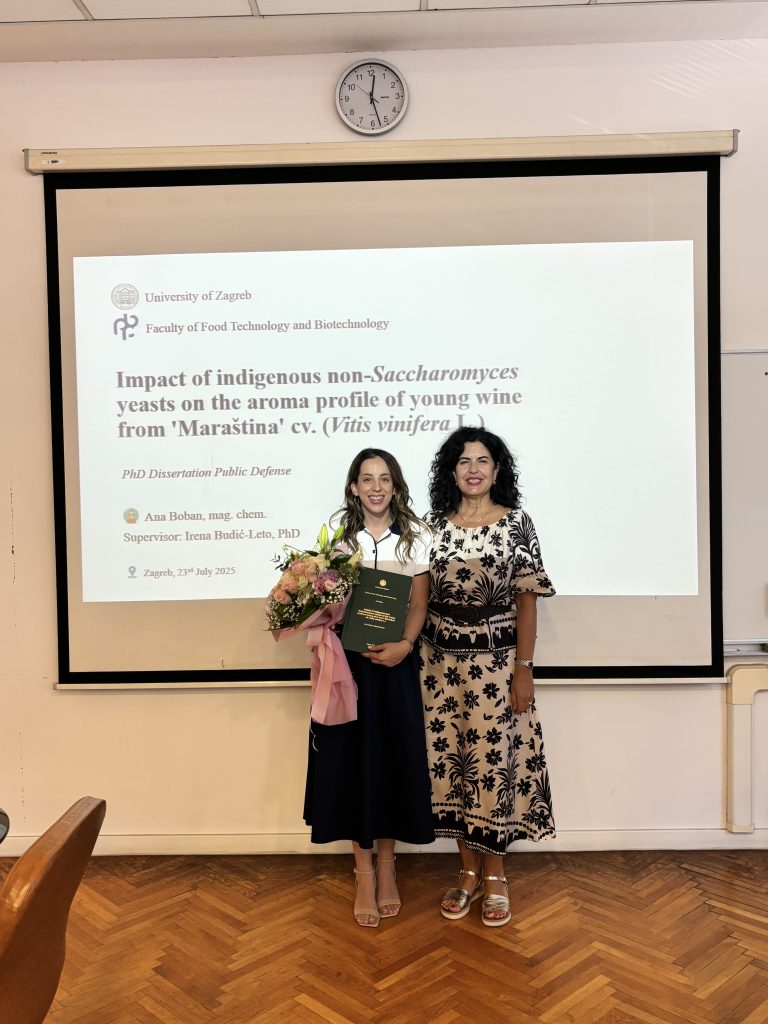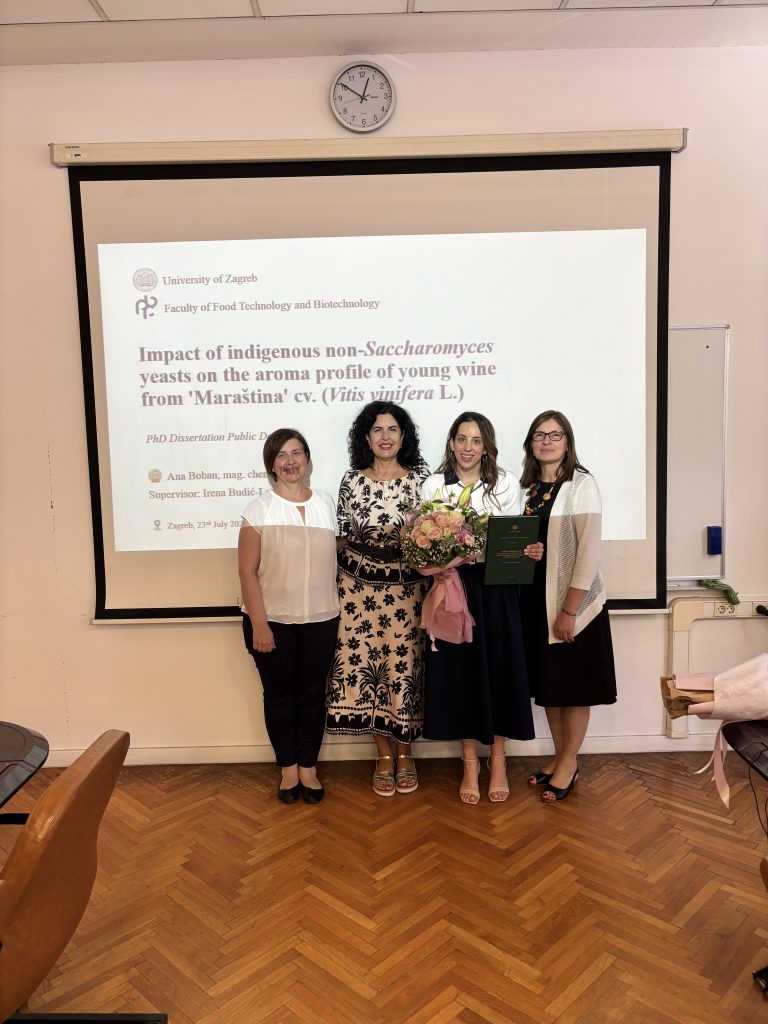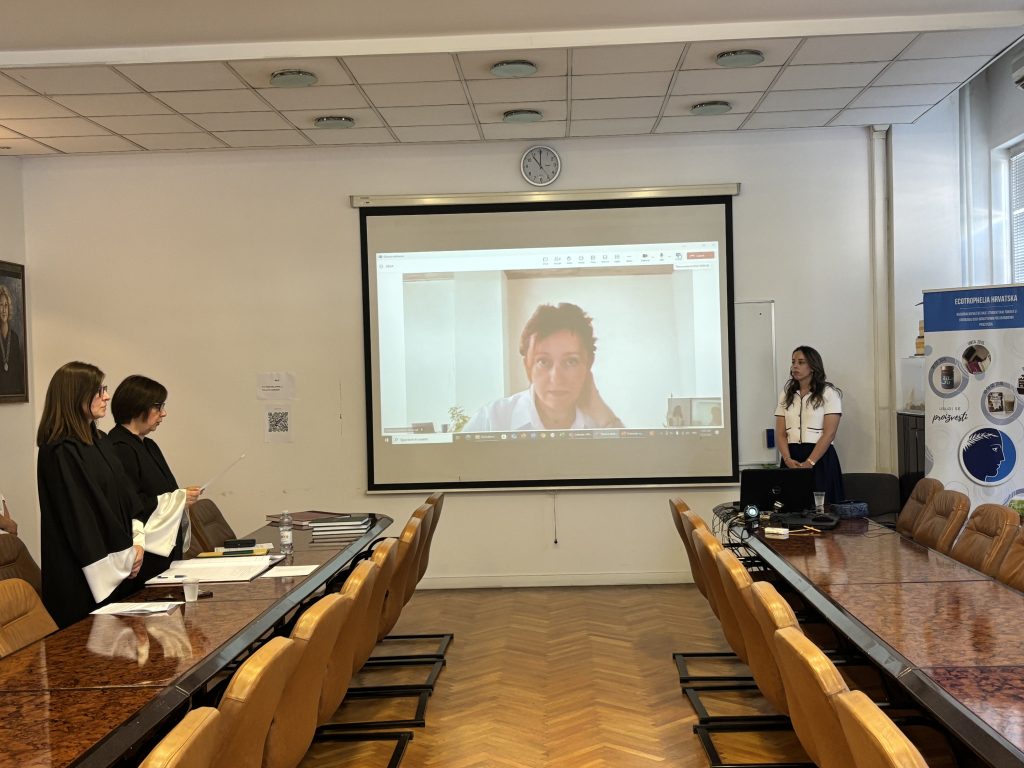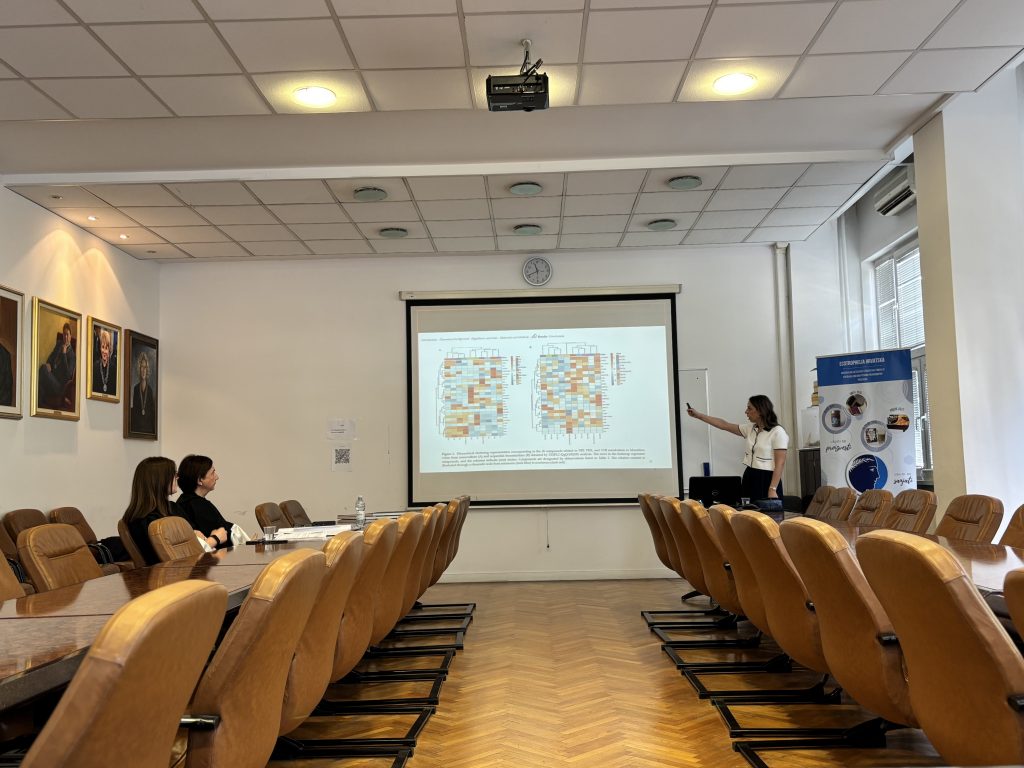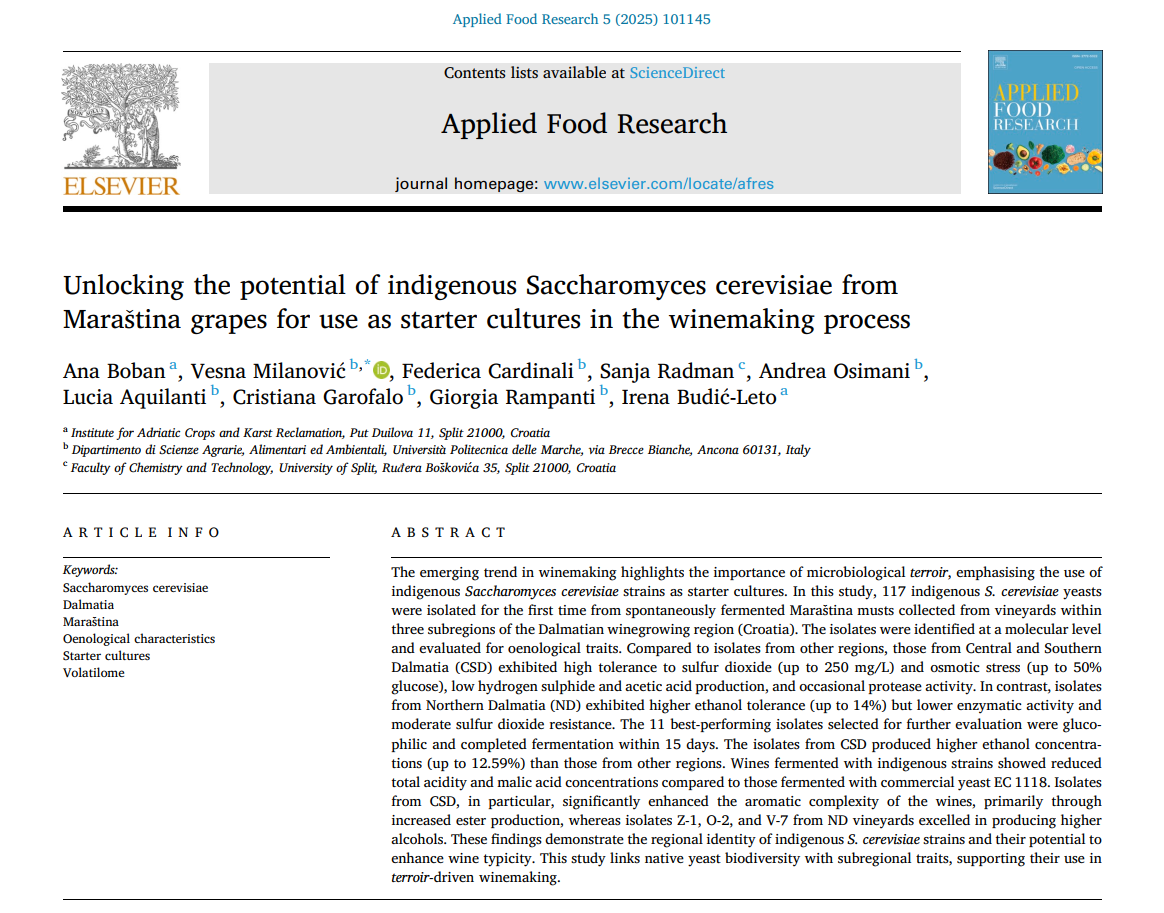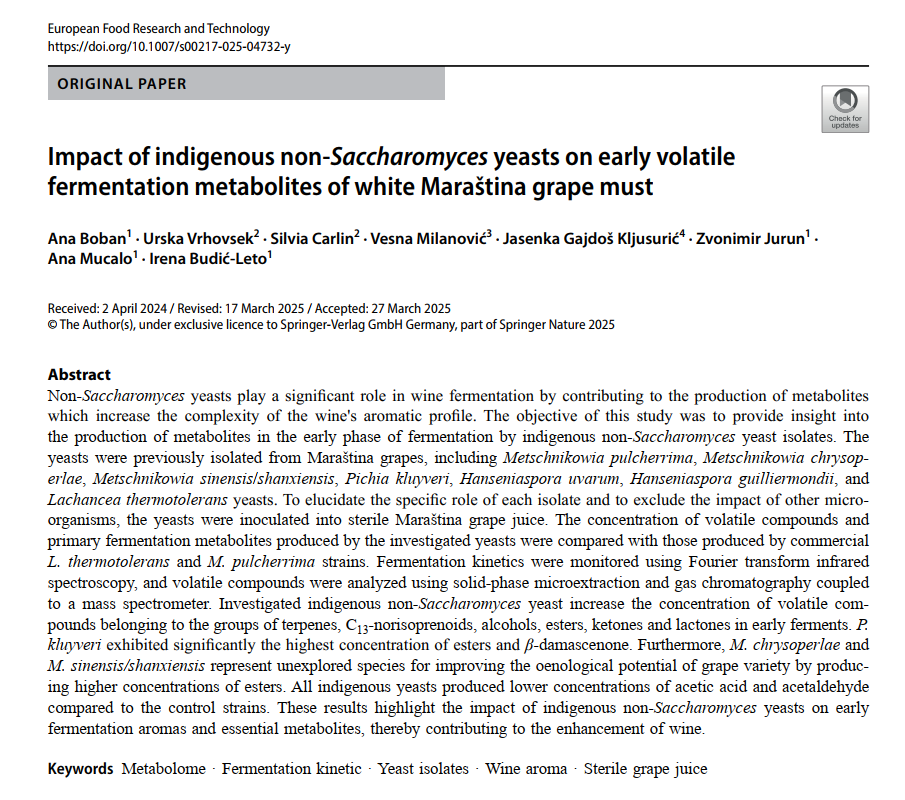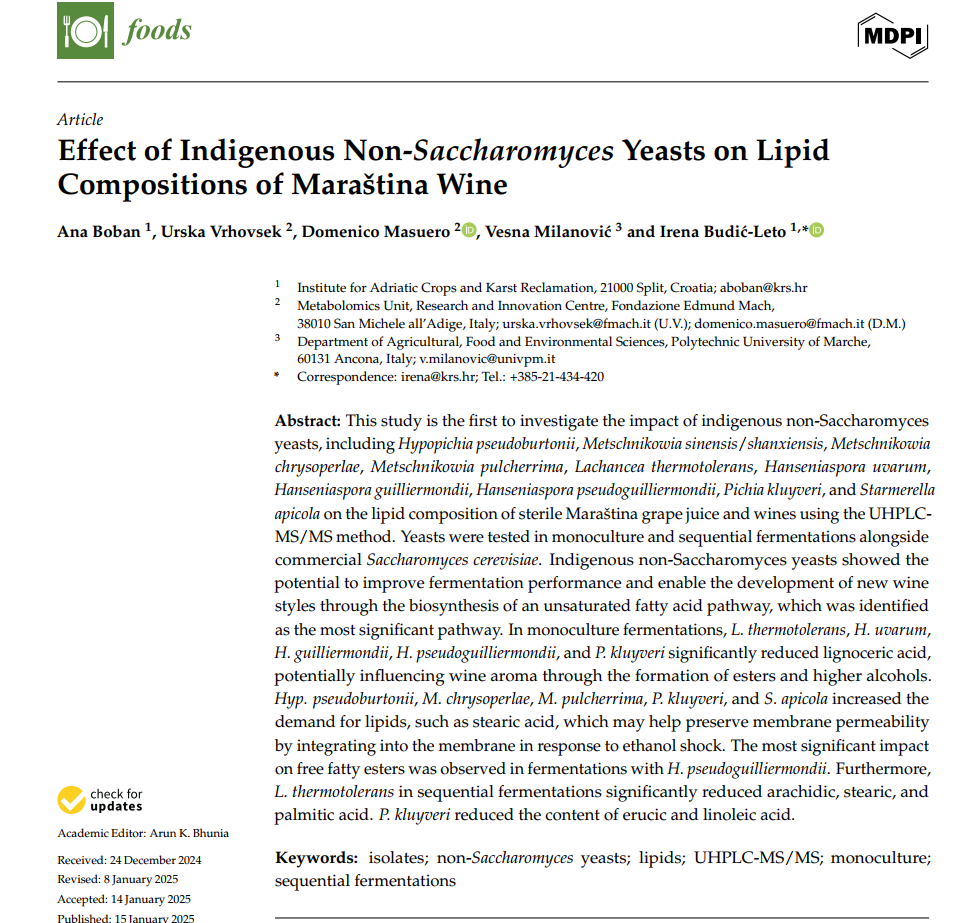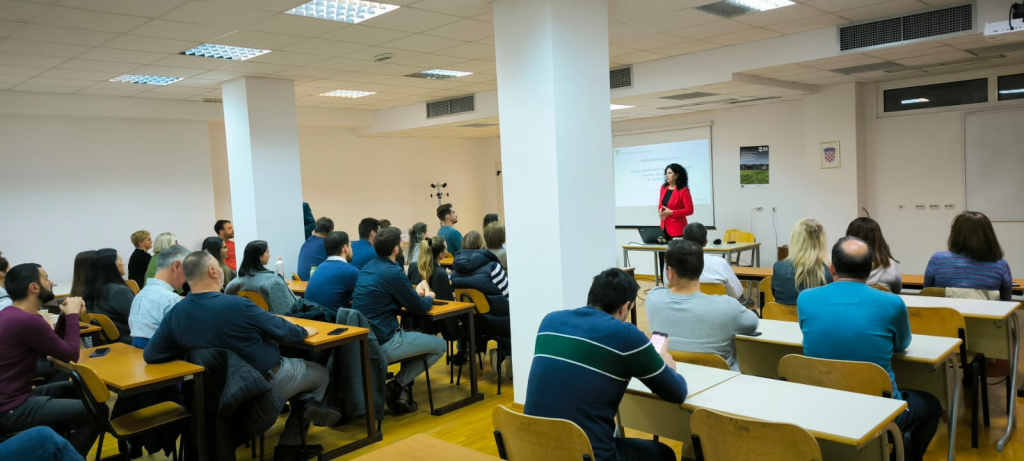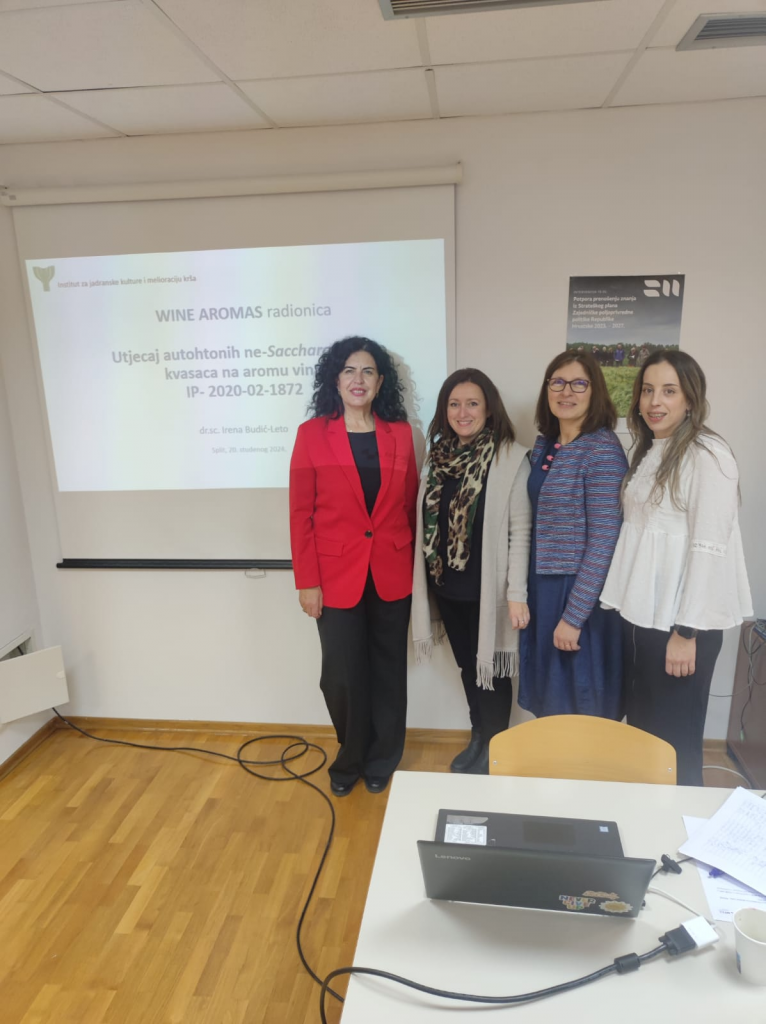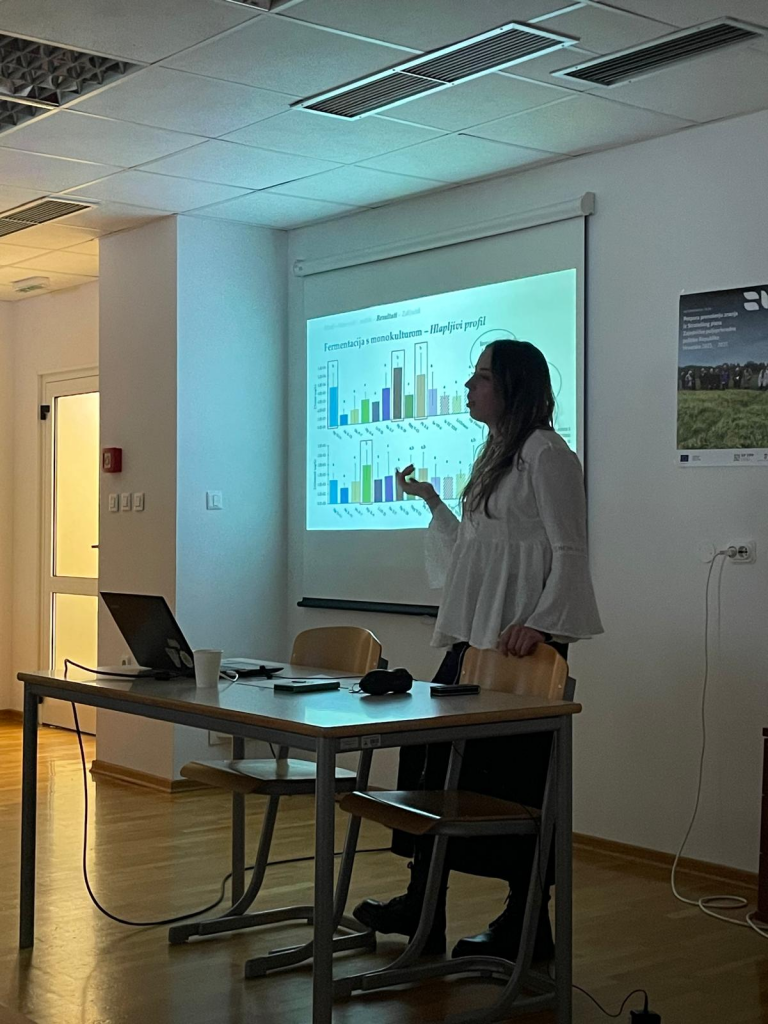Ana Boban, mag.chem., research assistant, has successfully defended her doctoral thesis titled “Impact of indigenous non-Saccharomyces yeasts on the aroma profile of young wine from ‘Maraština’ cv. (Vitis vinifera L.)”. The thesis was prepared following the Scandinavian model as part of the research projects IP-2020-02-1872 “Impact of native non-Saccharomyces wine yeast on wine aromas“ and DOK-2021-02 “Young Researchers’ Career Development Project-Training New Doctoral Students”. The thesis was awarded the distinction summa cum laude.
The public defense of the doctoral thesis was held on July 23, 2025, at the Faculty of Food Technology and Biotechnology, University of Zagreb, before the Thesis Defense Committee consisting of:
- Karin Kovačević Ganić, Ph.D., Full professor, Faculty of Food Technology and Biotechnology (chair)
- Jasenka Gajdoš Kljusurić, Ph.D., Full professor, Faculty of Food Technology and Biotechnology (member)
- Vesna Milanović, Ph.D., Associate professor; Università Politecnica delle Marche, Ancona, Italy (member)
Supervisor: Irena Budić-Leto, Ph.D., scientific advisor with tenure
We sincerely congratulate Ana and wish her continued success in her future research work!
The full doctoral thesis is available in the Dabar repository.
